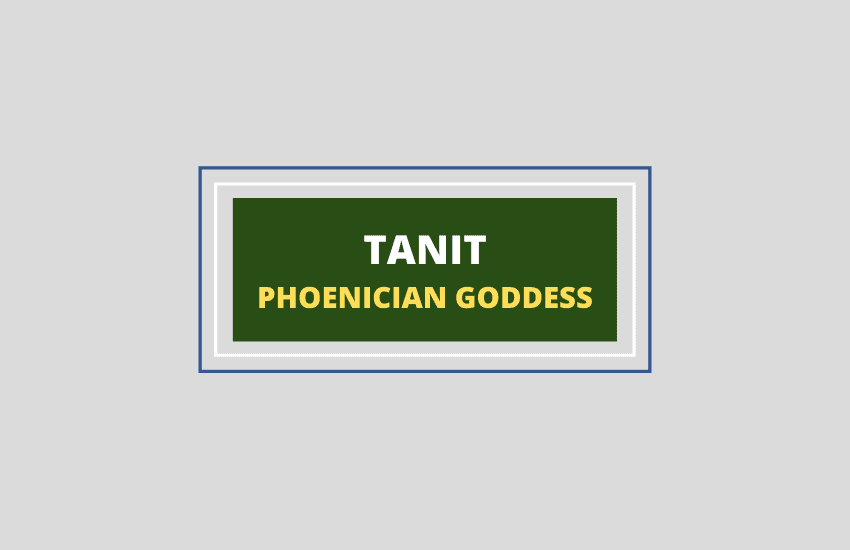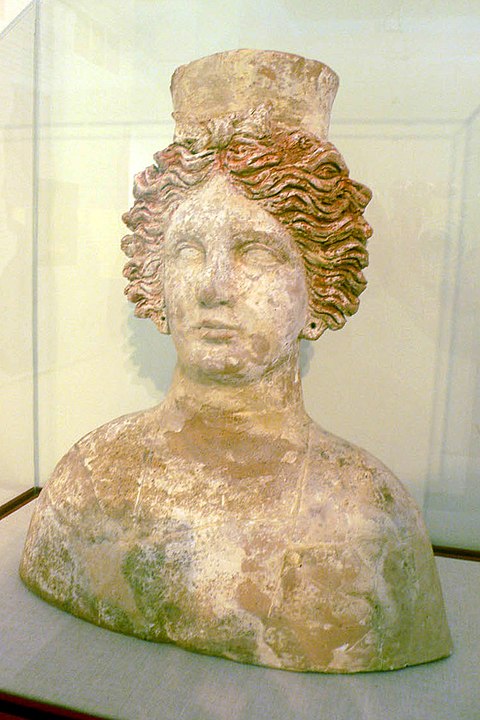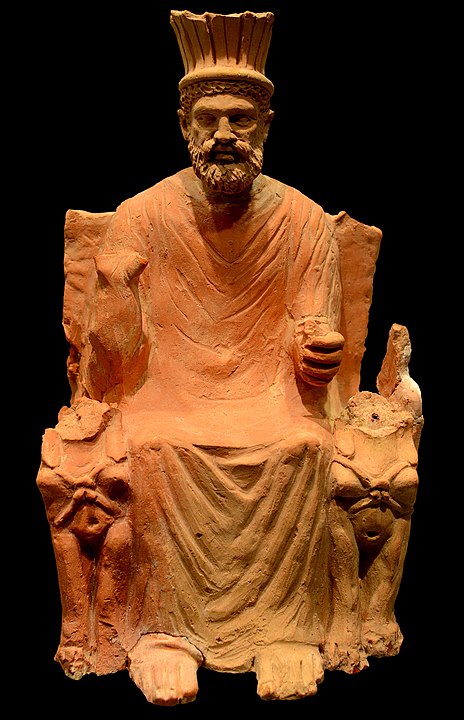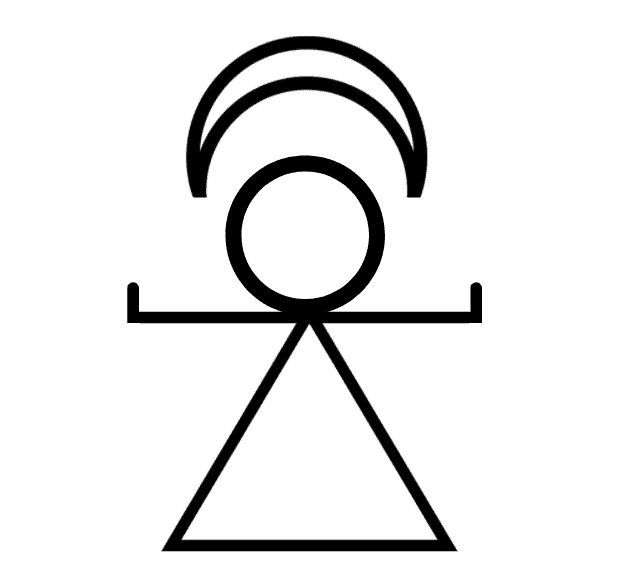
Table of Contents
Tanith, also called Tinnit or Tinith, was the chief goddess of Ancient Carthage, modern-day Tunisia. She is strongly associated with Baal Hammon, her consort. Worship of Tanit probably began around the 5th century BC in Carthage, and spread from there to Tunisia, Sardinia, Malta and Spain.

The Face of Baal
Tanit is considered a Sky Goddess who ruled over the celestial beings, along with Baal Hammon. In fact, she is considered a consort to the high god and was referred to as the face of Baal. Many inscriptions and artefacts relating to Tanit have been found in North Africa.
The following of Hammon, and Tanit in extension was large. Tanit was worshipped as a goddess of war, a symbol of fertility, a nurse and a mother goddess. This shows that she had many roles. She had a strong presence in the daily life of her worshippers and was invoked for matters relating to fertility and childbirth.
Tanit was identified with the Roman goddess, Juno. After the fall of Carthage, she continued to be worshipped under the name Juno Caelestis in North Africa.

Ironic Personification of Fertility
The fact that Tanit is a goddess people look for when they want the grace of fertility comes with no little irony, especially in light of what was unearthed in Carthage, the epicenter of Baal’s and Tanit’s worship.
No less than 20,000 remains of infants and children were found in a burial site that is said to have been dedicated to Tanit. Inscripted on the walls of the burial site were passages that seemed to suggest that the children were charred and killed as an offering to Tanit and her consort:
To our Lady, Tanit, and to our Lord, Baal Hammon, that which was vowed: Life for Life, blood for blood, a lamb for a substitute.
Other scholars are of the opinion that the children (and animals) found in these burial sites were in fact not killed in offering but were offered post-mortem after they had already died of natural causes. Considering that infant mortality was very high at the time, this is a plausible explanation. This would also explain why the bodies were charred – it must have been so that their diseases would no longer continue to pass on after their death.
Whether the children and young animals were killed as sacrifice to Tanit or were offered in the goddess’ memory post-mortem, those controversial burial sites bore testament to just how much reverence Carthaginians had for Tanit. There is speculation that the firstborn child of Tanit worshippers was sacrificed to the deity.
Aside from this shocking discovery, the burial site dedicated to Tanit and Baal also bore multiple carvings of a very specific symbol, which was found to be an emblem that exclusively pertained to the goddess Tanit.
The Tanit Symbol

As one of the most important deities revered by the Carthaginian people, Tanit was given her own abstract symbol in the form of a trapezium or a triangle with a circle above it, a long horizontal line with crescent shapes on each end, and a horizontal bar at the tip of the triangle. The symbol looks like a woman with arms raised.
The earliest recorded use of this symbol was carved on a stele that belonged to the early 19th century.
The tanit symbol is believed to be a symbol of fertility. Some scholars insist that it pertains to the child sacrifice done to all firstborn children of those who worship the fertility goddess and her consort.
However, it must also be noted that some experts believe that the trapezium with a disc does not represent Tanit herself but simply a guide to those who wish to sacrifice their children for their faith.
Other Symbols of Tanit
While Tanit herself has a distinct symbol, the Ancient Phoenician goddess also has other symbols that are connected to her in relation to being a fertility goddess. These include the following:
- Palm Tree
- Dove
- Grapes
- Pomegranate
- Crescent Moon
- Lion
- Serpent
Wrapping Up
While the sacrifices to Tanit are disturbing to us today, her influence was significant and spread far and wide, from Carthage to Spain. As a goddess, she played an important role in the daily lives of her worshippers.








